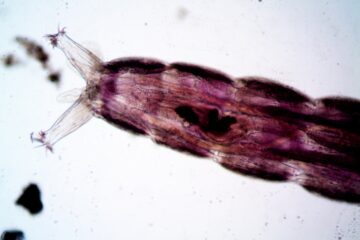![]()
Introduction
Sexual assault is a crime of violence against a person’s body resulting in physical trauma, mental anguish, and suffering for victims. It is a heinous crime. Sexual assault could include anything from touching another person’s body in a sexual way without their consent to forced sexual intercourse. The forensic scientific field aids in the criminal investigation against the culprit. The biological evidence collected during a criminal investigation of sexual assault helps in identifying the culprit. The forensic examiner uses the evidence collected to identify the perpetrator. But, from the collection of evidence to the reporting, proper procedures and guidelines have to be followed by everyone involved with proper care and caution. Also, in every stage of the process victim’s consent has to be obtained.
Thus we can say that sexual assault forensic analysis standards guide sexual assault investigations, examinations, and evidence collection. Since sexual assault investigations require the involvement of a range of different skilled forensic experts, equipment, and procedures, there needs to be an overarching standard guide to keep the resulting data coherent and reliable. Another major concern is the preservation of evidence for later use. In addition to these, standard guides have also been developed for the clinical psychophysiological detection of deception (PDD) testing of sex offenders, dealing with the examinations themselves as well as the training and education requirements placed upon the examiner.[1]
What is a SAFE Kit?
A Sexual Assault Forensic Evidence Kit is used for collecting and preserving physical evidence following sexual violence. The evidence collected from the patient can be further used in criminal investigation if the patient decides to file a report. The following materials are contained in the kit[2] :
- Forms of Documentation
- Large sheet of paper to undress over
- Paper bags for clothing collection
- Catchment Paper
- Sterile cotton swabs and swab guards for biological evidence collection
- Comb
- Nail Cutter
- Wooden stick for fingernail scrapings
- Small scissors
- Urine sample container
- Tubes/ vials/ vaccutainers for blood samples [Ethylenediaminetetraacetic acid (EDTA), Plain, Sodium fluoride]
- Syringes and needle for drawing blood
- Distilled water
- Disposable gloves
- Glass slides
- Envelopes or boxes for individual evidence samples
- Labels
- Lac(sealing wax) Stick for sealing
- Clean clothing, and shower/hygiene items for survivors’ use after the examination.
Evidence Collection
To obtain the evidence, the consent of the patient is a must. At every step, their consent must be obtained. The patient must provide verbal and written consent. The process of evidence collection takes around six hours. If any injuries are present, they must be treated first before collecting evidence. To cover as much DNA as possible, the optimal time frame for forensic evaluation should be 72 hours from the assault. biological evidence such as pubic hair, body fluids, and skin cells present on the body or clothes of the victim can be a potential source of the DNA profile of the accused. In case of hand-genital contact or cases of the struggle between the victims and accused, the fingernails of the victim may contain skin cells of the accused. This biological evidence, if collected, preserved, and analyzed properly and timely, can provide a DNA profile of the accused and hence aids in the conviction.[3]
The protocol for evidence collection is as follows[4]:
- Completion of consents and forms in the Sexual Assault Evidence Collection Kit (SAECK)
- A thorough history involving recent genital procedures, symptoms since the assault, details of the assault, number of assailants, specific threats, type of penetration, nongenital acts, loss of consciousness, amnesia, and activities after the assault.
- Control swabs
- Toxicologic testing within 72 hours, especially if there is a loss of consciousness, to determine what drugs the patient used or ingested
- Blood or saliva swabs for patient’s DNA
- Oral swabs/smears if <24 hours since oral penetration
- Fingernail scrapings if the patient was able to scratch the perpetrator
- The foreign material collection is material that falls off patients when undressing. Collect sheets on the exam table and/or from an ambulance as evidence may be present in the debris.
- Clothing collection. If cutting clothes off the patient, providers should pay special attention to preserving holes in clothing, and stains that would corroborate the use of force against the patient.
- Examine the full body for injuries, lesions, and secretions. Document with photos when possible. If bite marks are present, swab the area twice.
- Head-hair combings
- Pubic hair combings
- For female patients, examine for anogenital injuries in the lithotomy position. Take external genital swabs, vaginal swabs, and perianal swabs.
- For male patients, examine penile and anal injuries. Take penile swabs, urethral swabs, and anorectal swabs.
- Complete forms and seal envelopes inside the sexual-assault evidence collection kit.
This entire process is known as a sexual assault forensic exam. This process helps in safely storing evidence. Since DNA evidence needs to be collected within 72 hours, this exam helps in revealing other evidence. Thus, the examination process shall include:
- Collection and gathering of all the relevant information
- The examination strategy
- Photography
- Documentation and recording
Who is eligible to conduct the examination?
SANE
Sexual Assault Nurse Examiners are specially trained and educated nurses to handle such cases of sexual assault. They are trained and fulfill clinical requirements to perform the exam.
SAFE
Sexual assault forensic examiners are trained and instructed to complete the exam.
These people have the competency to perform and conduct these exams. They also can testify in court as a witness. They are specially trained to provide care and assistance to sexual assault patients.
Photography
Photographic evidence of injuries on the patient’s body will supplement the medical forensic history and physical findings. Different jurisdictions have different consensus on whether to take photographs of only the injured part and limit to it or of also uninjured parts. Photographers should be familiar with forensic photography and should be educated to maintain patients’ privacy and dignity while taking photographs. The patient’s consent should be obtained before taking any kind of photograph. Also, the purpose of taking photographs should be explained to the patient if possible. The photographs should be taken in accordance with the policies. Also, the patient’s comfort should be taken into consideration.[5]
Documentation and Reporting
The forensic examiner has to follow a proper policy for documentation, reporting, and recording of the information about each patient. The notes should contain all the activities and decisions concerning the patient. Only information that has been obtained with the patient’s consent should be written. There should be clarity, accuracy, and legitimacy in all the notes and recordings. Whether the personal protective equipment was worn by the examiners during the examination along with the number of attendees has to be recorded. The forensic examiner’s name and other details also have to be noted down. The findings or the final reports have to be documented properly as they might be useful in a court of law. Amendments made to the documents and who all had access to these documents have to be recorded. It has to be mentioned if anyone had access to this information whether it might be for a second opinion, peer review, or criminal investigation.[6]
Guidelines Listed for Forensic Examiners
- Evidence should be collected, handled, and stored properly.
- The sample collection should be done wearing masks and gloves. Gloves should be changed after every sample collection to avoid cross-contamination.
- Disposable or sterilized devices should be used to avoid cross-contamination.
- The evidence collected should not be subjected to intense light and high temperatures.
- Chain of custody should be maintained and well documented.
- Polythene bags should not be used.
- The Sexual Assault Evidence Kit should be handled by a registered forensic examiner or a medical practitioner.[7]
Conclusion
Forensic sexual assault investigation standards are guidelines that help forensic examiners in aiding the criminal investigation of sexual assault cases. The sexual assault forensic examination helps in identifying and treating the injury of patients. Collection of evidence in sexual assault cases is a very crucial step. Forensic experts play a significant role in collection and evidence and information in sexual assault cases. The consent of a patient is a must in each and every stage of the examination. Standardized procedures for documentation of patient history and collection of evidence are being followed. These standard procedures help in maintaining uniformity. Also, the patients can follow up on the process due to a standard frame of the procedure. Awareness of such procedures should be facilitated.
References:
[1] Forensic Sexual Assault Investigation Standards, ANSI, https://webstore.ansi.org/industry/forensics/sexual-assault.
[2] Guidelines and Protocols, MINISTRY OF HEALTH AND FAMILY WELFARE GOVERNMENT OF INDIA, https://main.mohfw.gov.in/sites/default/files/953522324.pdf.
[3] Suminder Kaur, Simarpreet Kaur and Banita Rawat, Medico legal evidence collection in child sexual assault cases : a forensic significance, 11 EGYPTIAN JOURNAL OF FORENSIC SCIENCES, 41 (2021).
[4] Megan Ladd and Jesus Seda, Sexual Assault evidence Collection, NATIONAL LIBRARY OF MEDICINE (Apr. 30, 2022), https://www.ncbi.nlm.nih.gov/books/NBK554497/.
[5] A National Protocol for Sexual Assault Medical Forensic Examinations, U.S DEPARTMENT OF JUSTICE (Sept. 2004), https://www.ojp.gov/pdffiles1/nij/206554.pdf.
[6]Codes of Practice and Conduct, FORENSIC SCIENCE REGULATOR, https://assets.publishing.service.gov.uk/government/uploads/system/uploads/attachment_data/file/886562/116_Requirements_Sexual_Assault_Examination.pdf.
[7] Guidelines for Forensic Medical Examination in Sexual Assault Cases, (2018), https://www.mha.gov.in/sites/default/files/womensaftyDivMedicalOfficers_06082018_0_0.pdf.



0 Comments